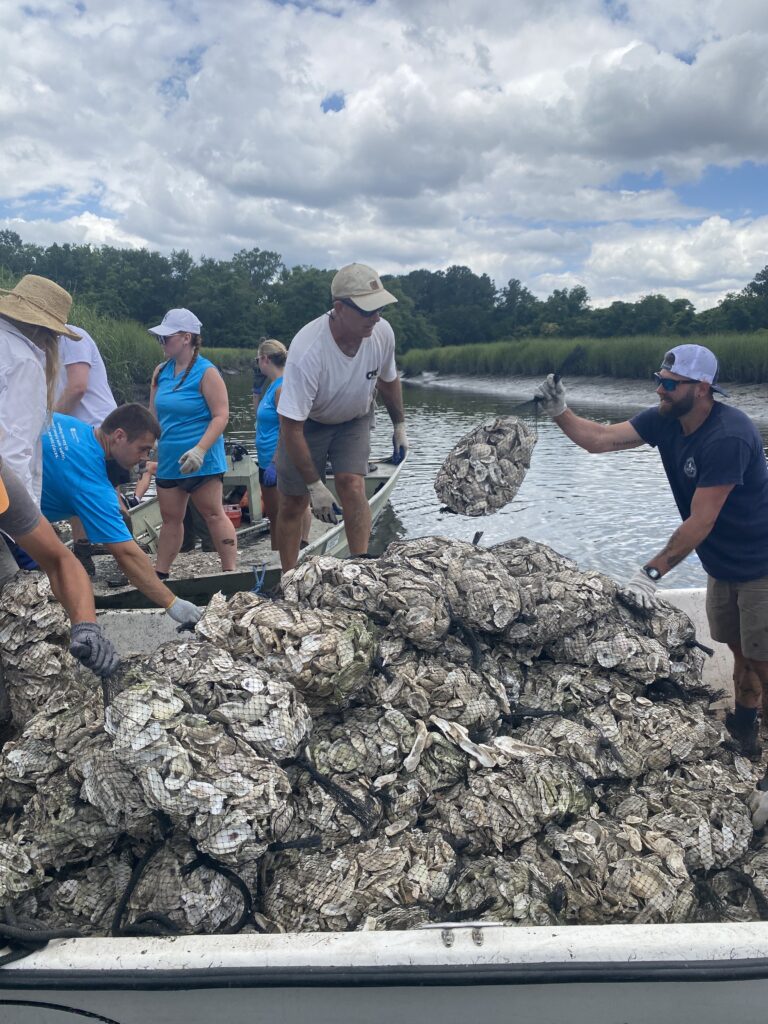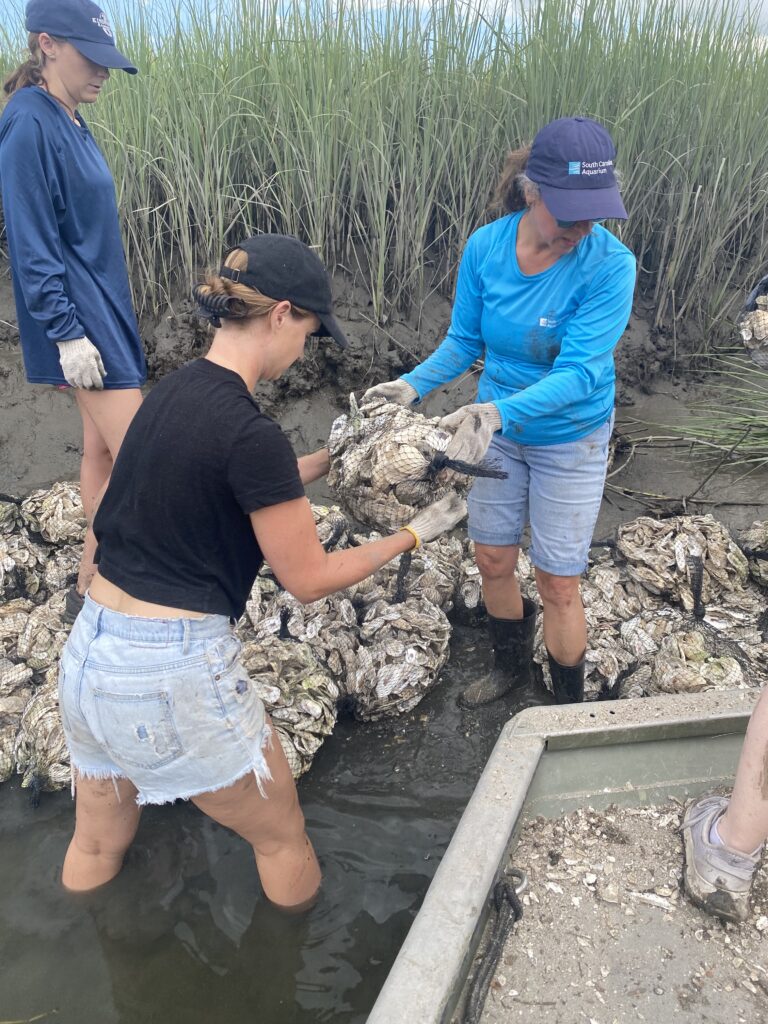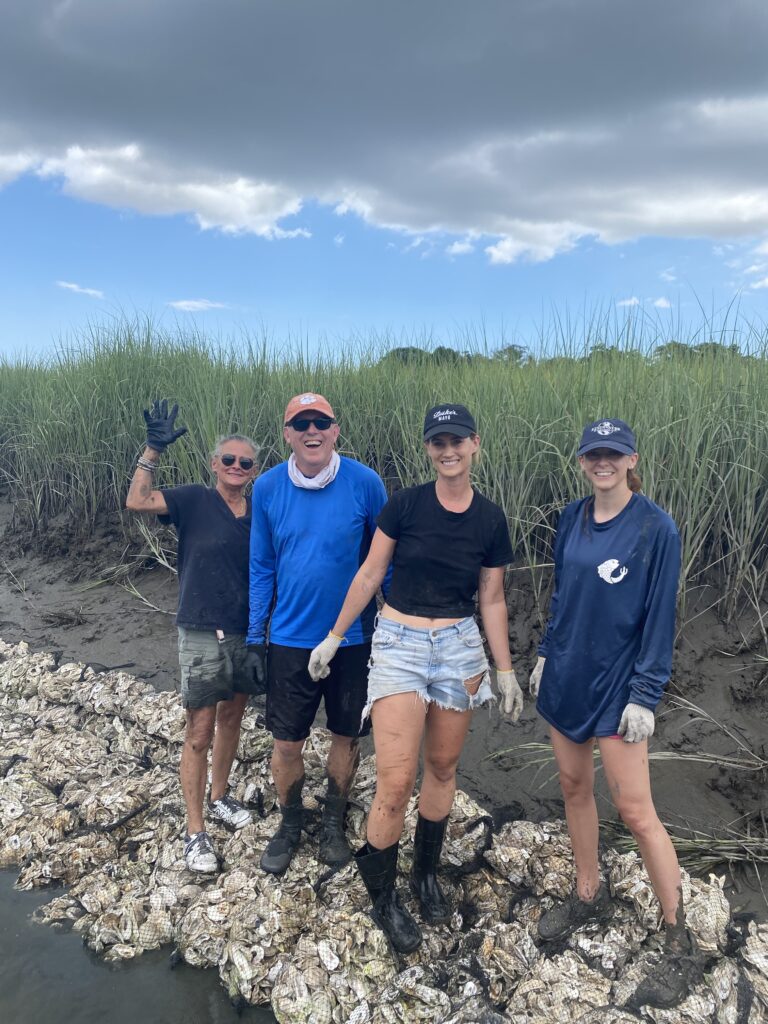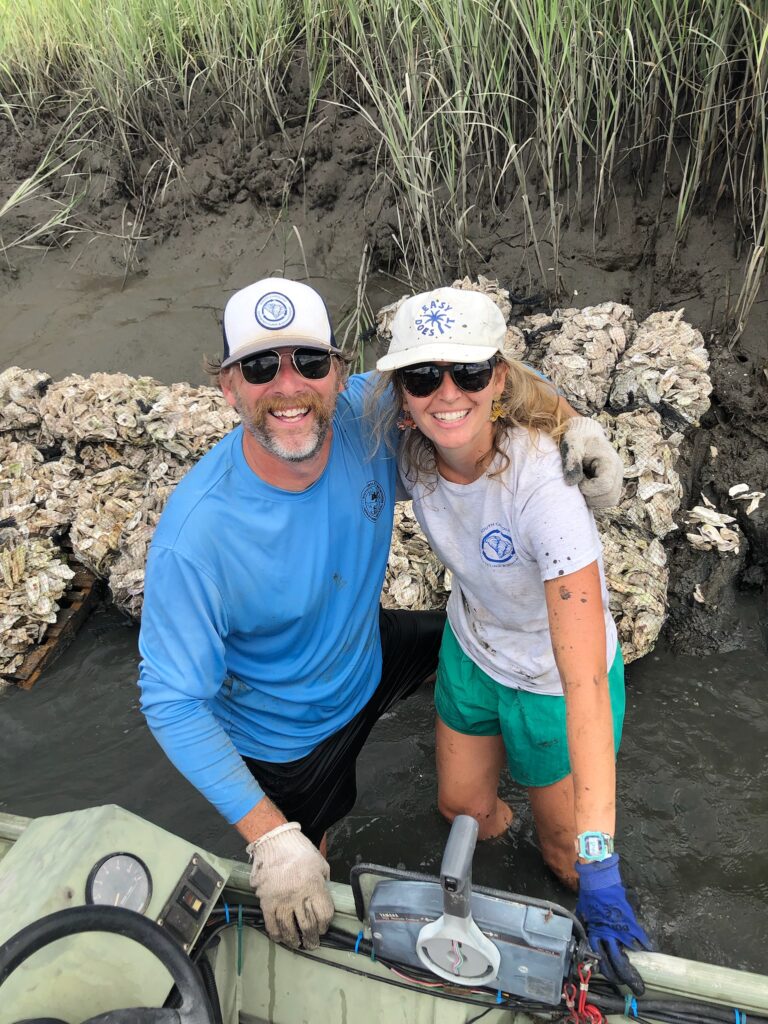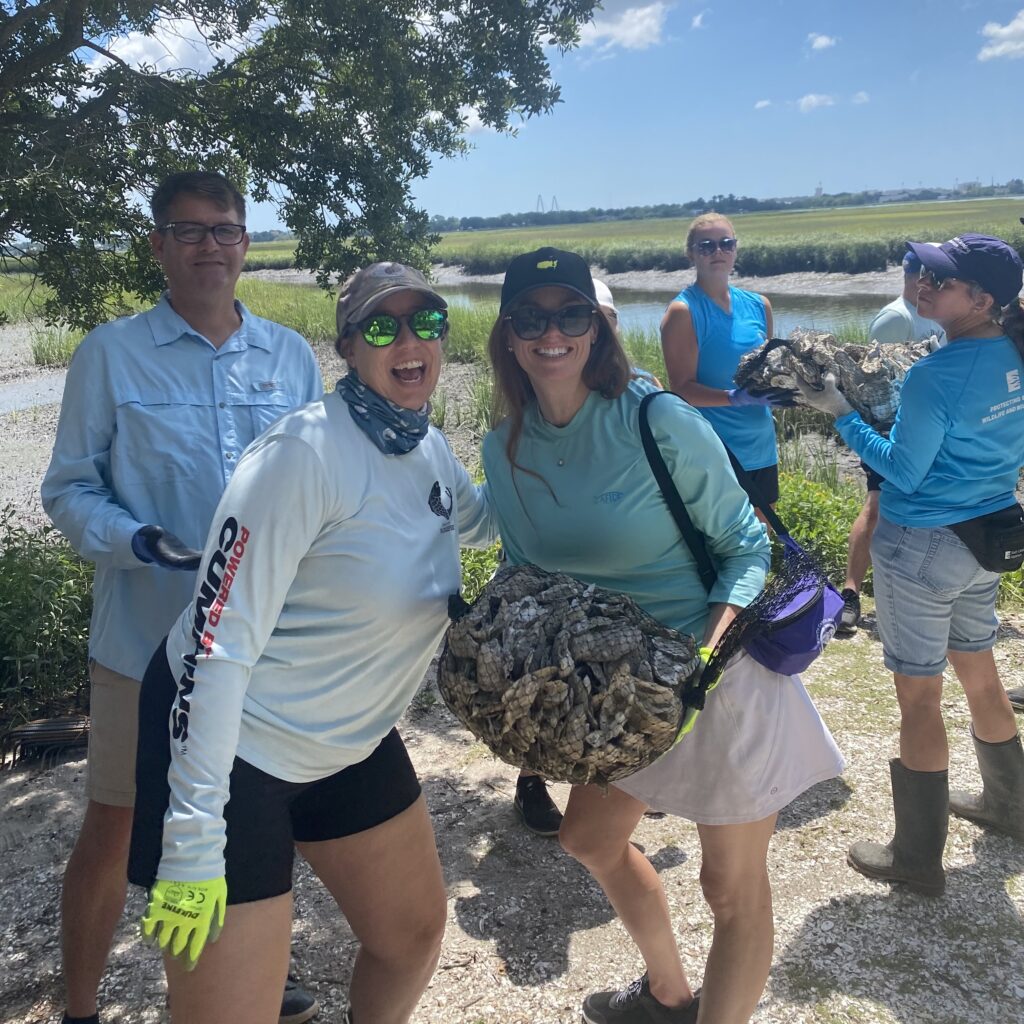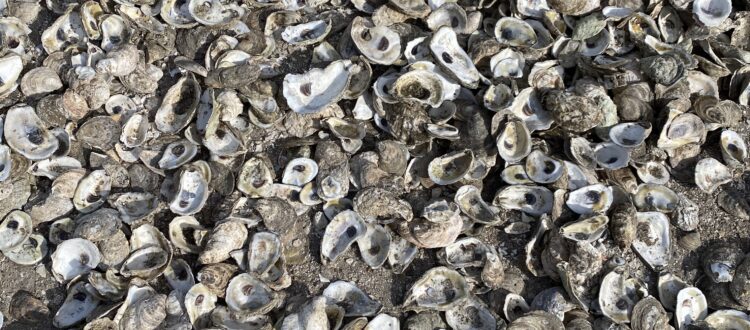Oyster Reef Restoration with SCDNR SCORE
What do you do with your oyster shells?
Do you love eating oysters? Lowcountry locals love to spend their weekends at oyster roasts or their local fish camp, but have you ever thought about what happens to those oyster shells after you enjoy their delicious insides? Ideally, those shells would get returned to the shorelines in your marshes and tidal creeks to provide a place for baby oysters called “spat” to attach to. When oysters spawn, the spat are released into the water and they need somewhere to attach in order to survive and grow into adult oysters. But our lowcountry oysters do more than just taste good, a single adult oyster filters up to 50 gallons of water per day, helping to keep our waterways clean!
Keep reading to learn how the SCDNR SCORE team and Cheryl, our amazing Staff Scientist and Volunteer Coordinator, and our hardworking Charleston Waterkeeper volunteers work hard to restore your oyster reefs so we can keep enjoying our oysters and they can keep your waterways clean!
Pick-up & Drop-off
There are lots of different ways to get your oyster shells back in the marsh! The first step in the process is shell pickup and drop-off. The SCORE program collects many shells from oyster roasts, various drop-off sites open to the public, and from participating local restaurants. The SCDNR partners with 20-30 restaurants in the Charleston area. In 2023, the SCORE team recycled a whopping 38,248 bushels of shell, diverting oyster shells from landfills, and instead getting them back in the marsh to restore oyster habitats.
The SCDNR SCORE team needs all the shell they can get to make this happen. Be sure to do your part in restoring our ecosystems by recycling your oyster shells. Click here to view a map of the dropoff sites!
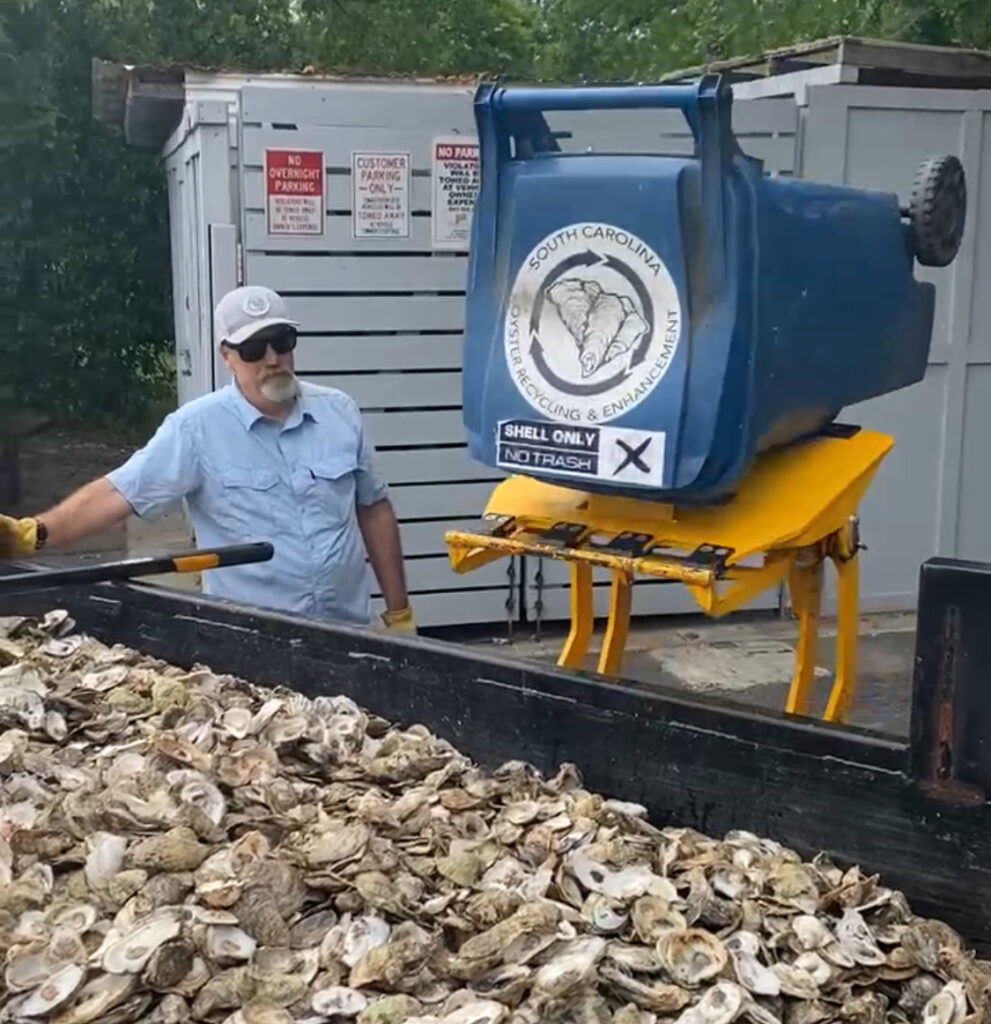
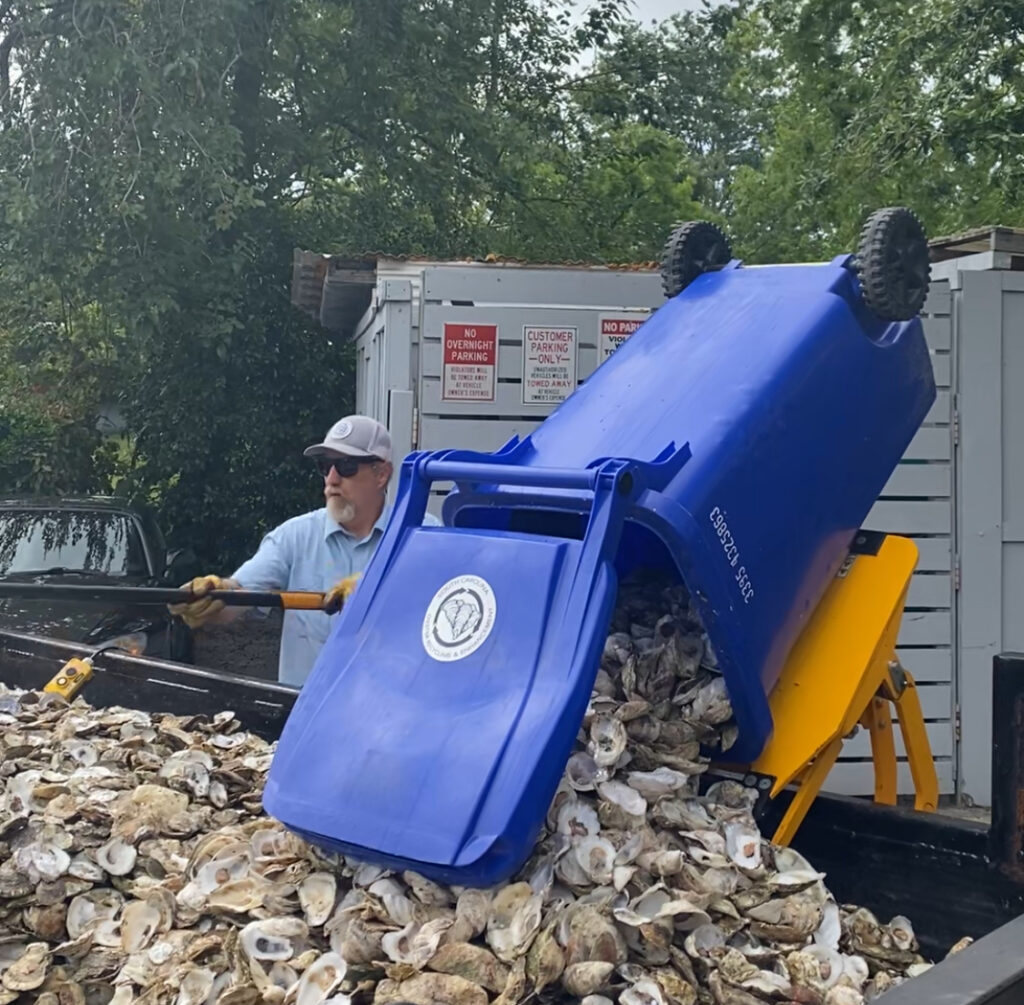
Trash Picking & Quarantine
After shells are picked up from restaurants and oyster roasts or taken to a drop off site, the shells are transported to a quarantine site. When the shells first arrive, Charleston Waterkeeper volunteers and the SCORE team sort through the shells to remove any trash that may have been thrown in with the oysters. Volunteers typically find plenty of saltine wrappers, seafood forks, oyster knives, beer cans, ramekins, and lots of other debris in the recycled shell. Last year, 1,705 lbs of trash was removed from recycled shells using trash pickers and gloves to prevent all that debris from getting back into your waterways. After trash picking, shells are quarantined for 6 months, sitting in huge mountains of shell in the sun to bake off any extra tissue or bacteria to make sure no pathogens or bacteria are being introduced back into the ecosystem.
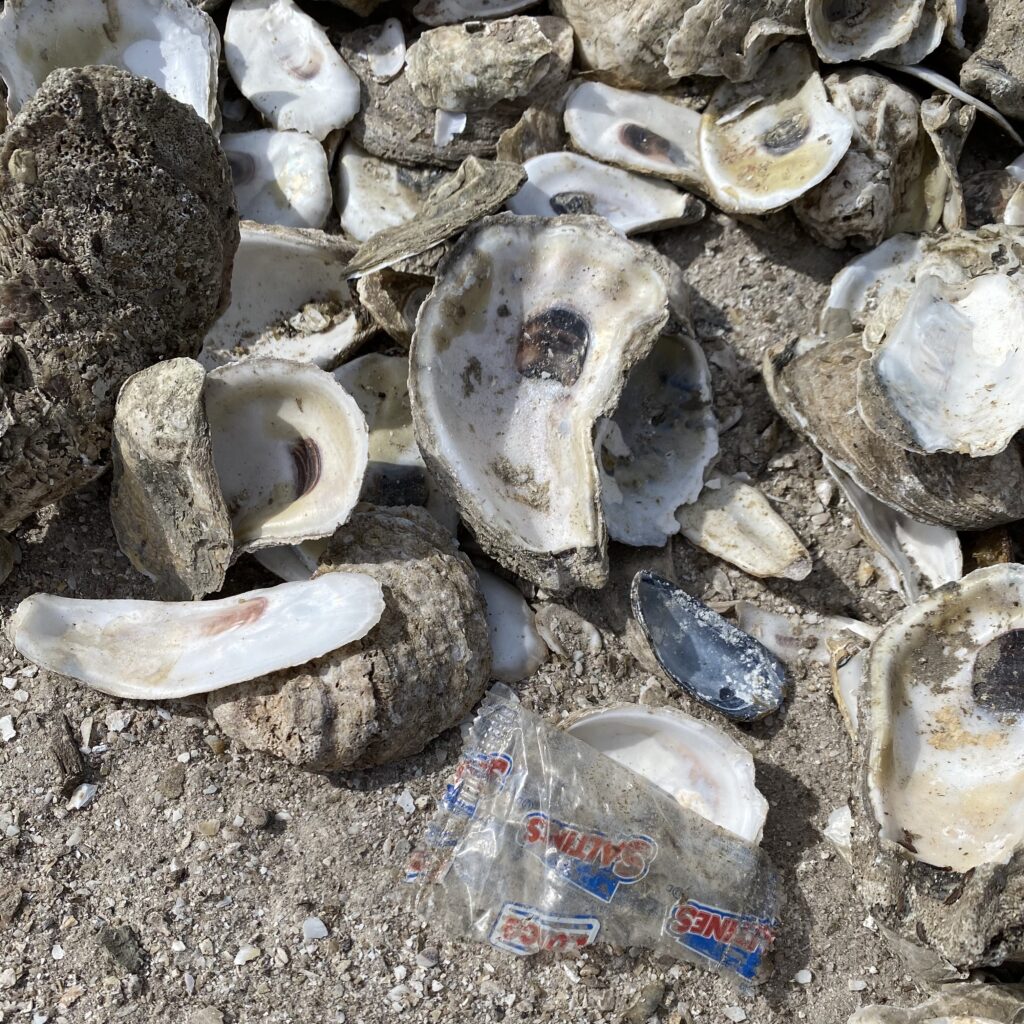
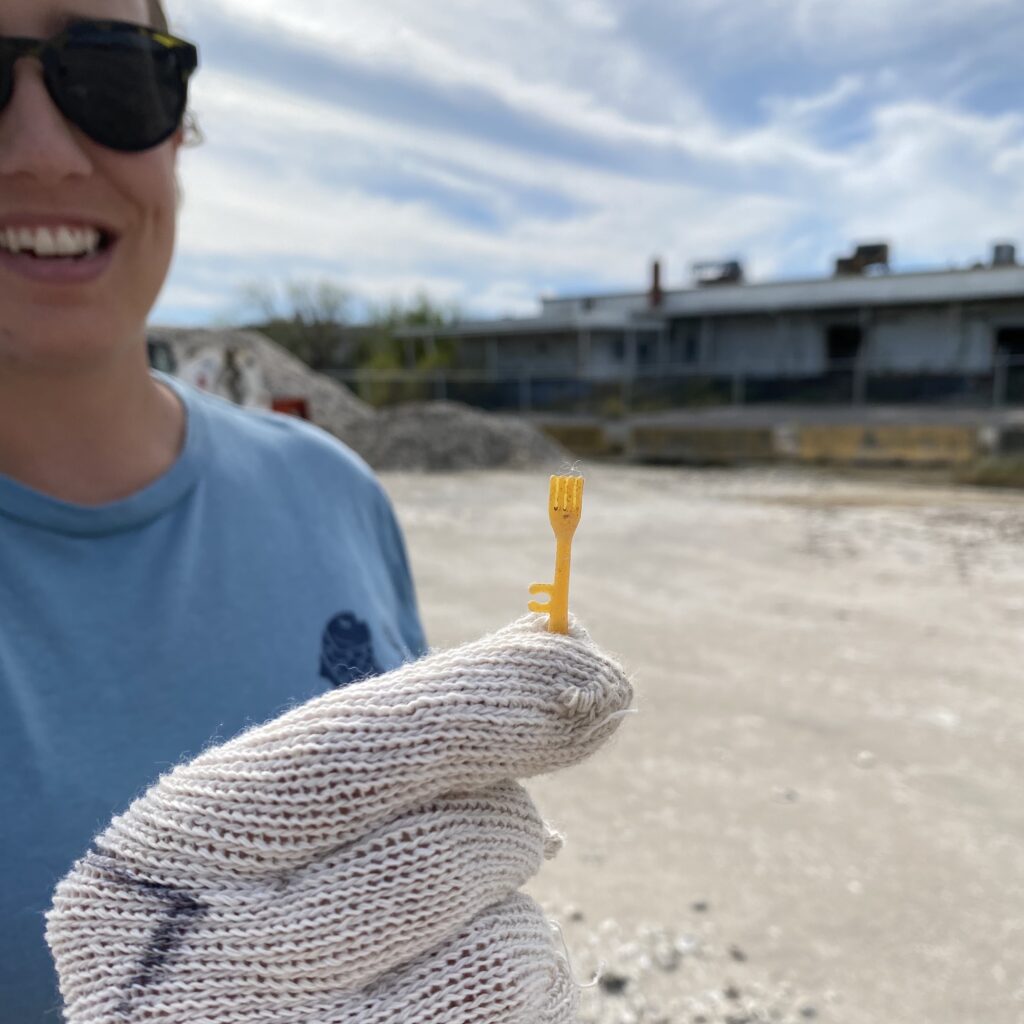
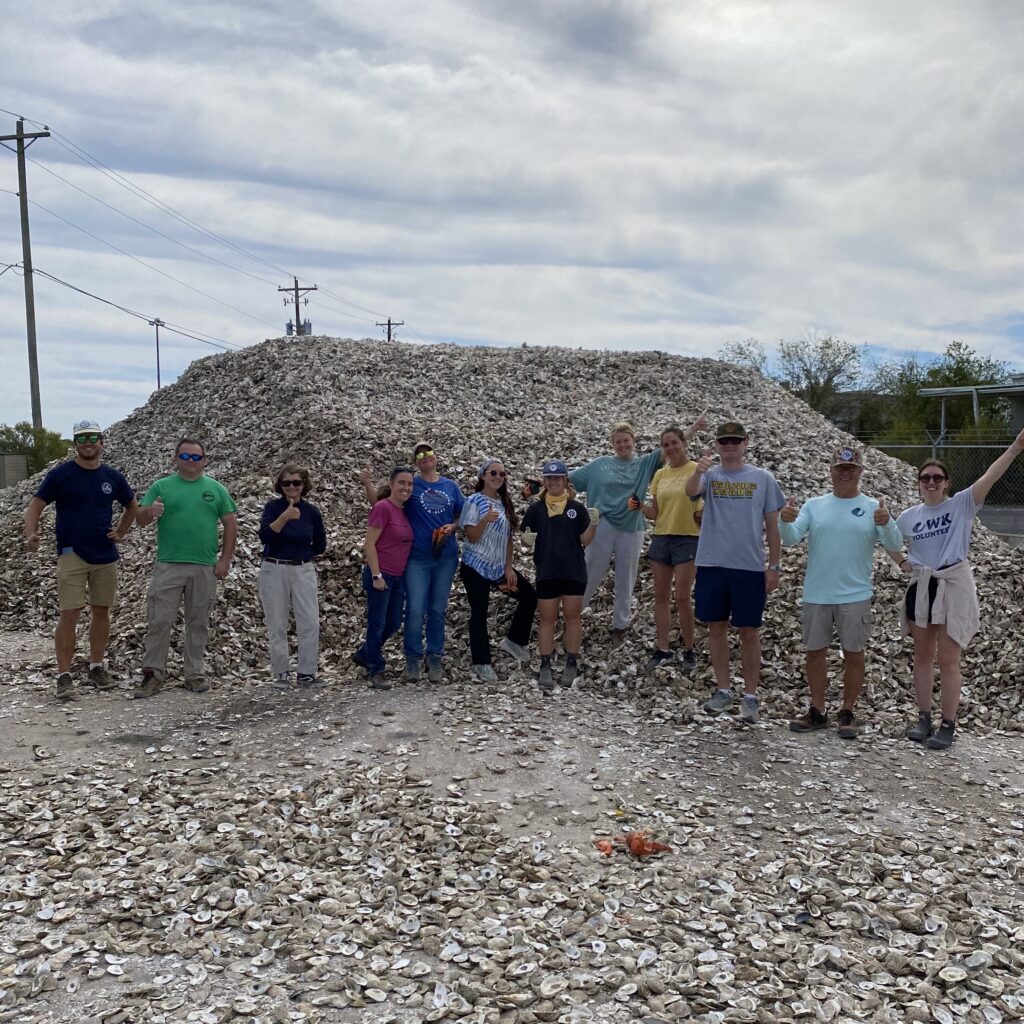
Shell Bagging & Manufactured Wire Reef Builds
After the shells are quarantined, they are taken to the DNR campus on Fort Johnson where the team and volunteers construct and fill Manufactured Wire Reefs (MWRs) (shown in the photo below) or bags filled with oyster shells. Typically, these volunteer events occur in Fall and Winter, but as the SCORE program grows, it’s becoming a year-round operation!
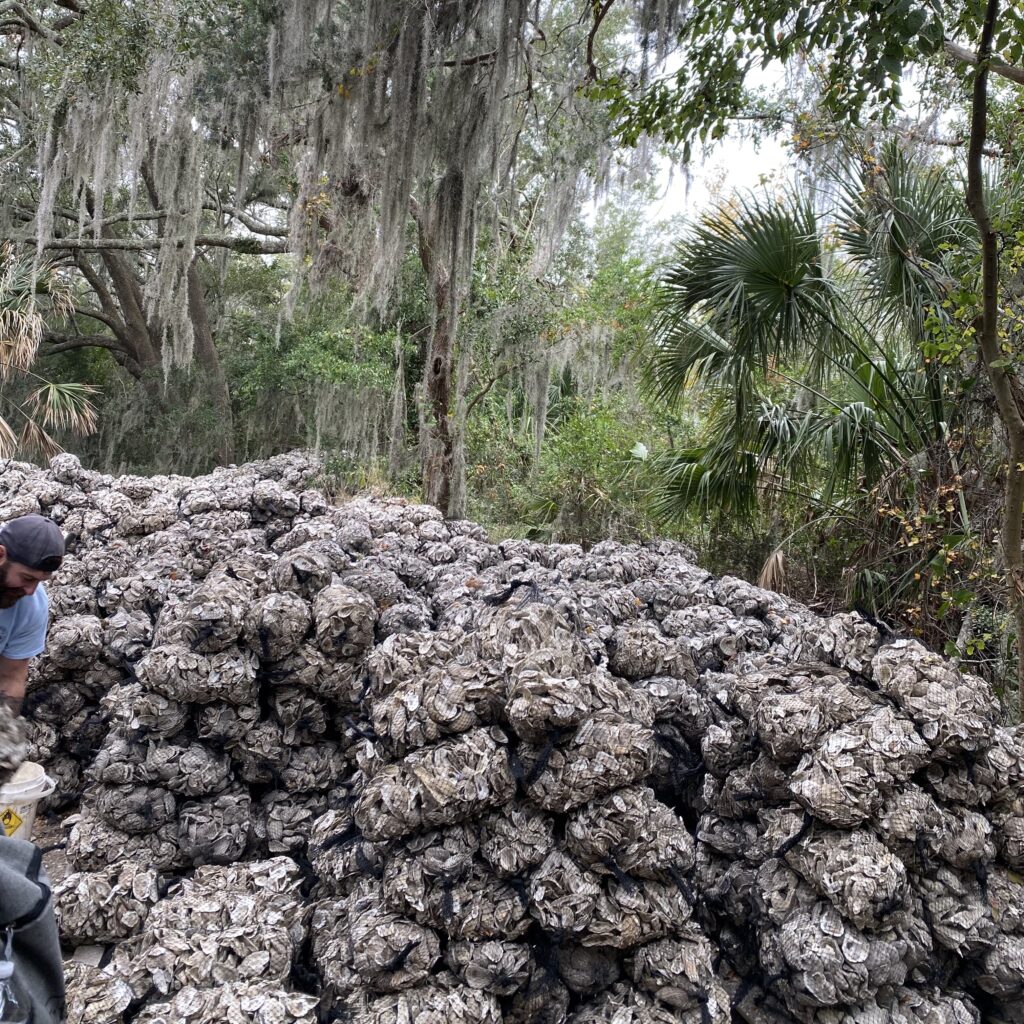
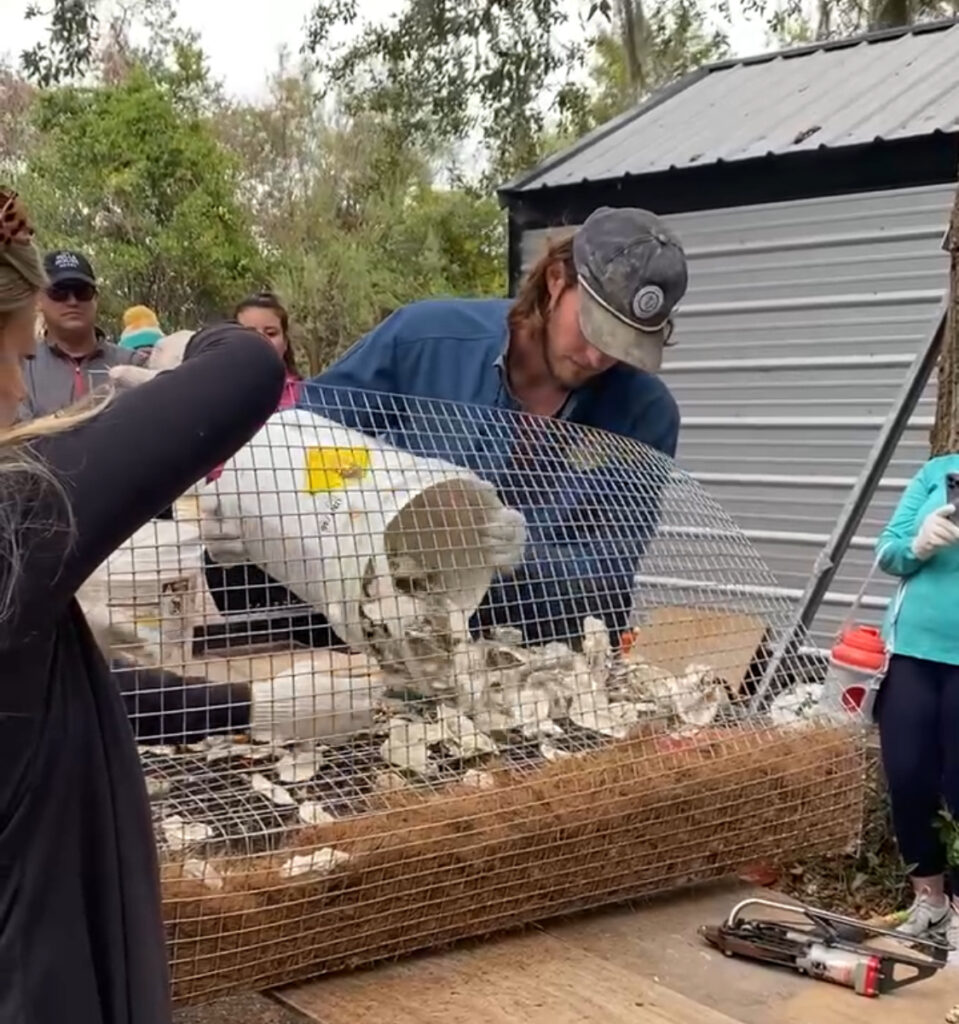
Reef Drop
Spring and summertime means it’s time to put those oyster bags and MWRs on the shoreline! According to one of SCORE’s wildlife biologists, Kelly Lambert, the Reef Drop is where “the volunteers are the magic!” Those who are ready to embrace being knee-deep in the pluff mud work together to secure the oyster shell bags on the shoreline, helping to prevent shoreline erosion, trapping sediment to maintain the elevation of the marsh, and attracting oyster spat to keep your oyster reefs thriving. With the help of their bravest volunteers, the SCORE team deployed 8,270 shell bags and 327 MWRs on the shoreline, creating 0.64 acres of new oyster reef in 2023!
Ready to get your hands dirty?
Every step of the process is made possible by folks like you!
Click here to learn more about the SCDNR SCORE Program!
Click here to check out the Instagram reel!
